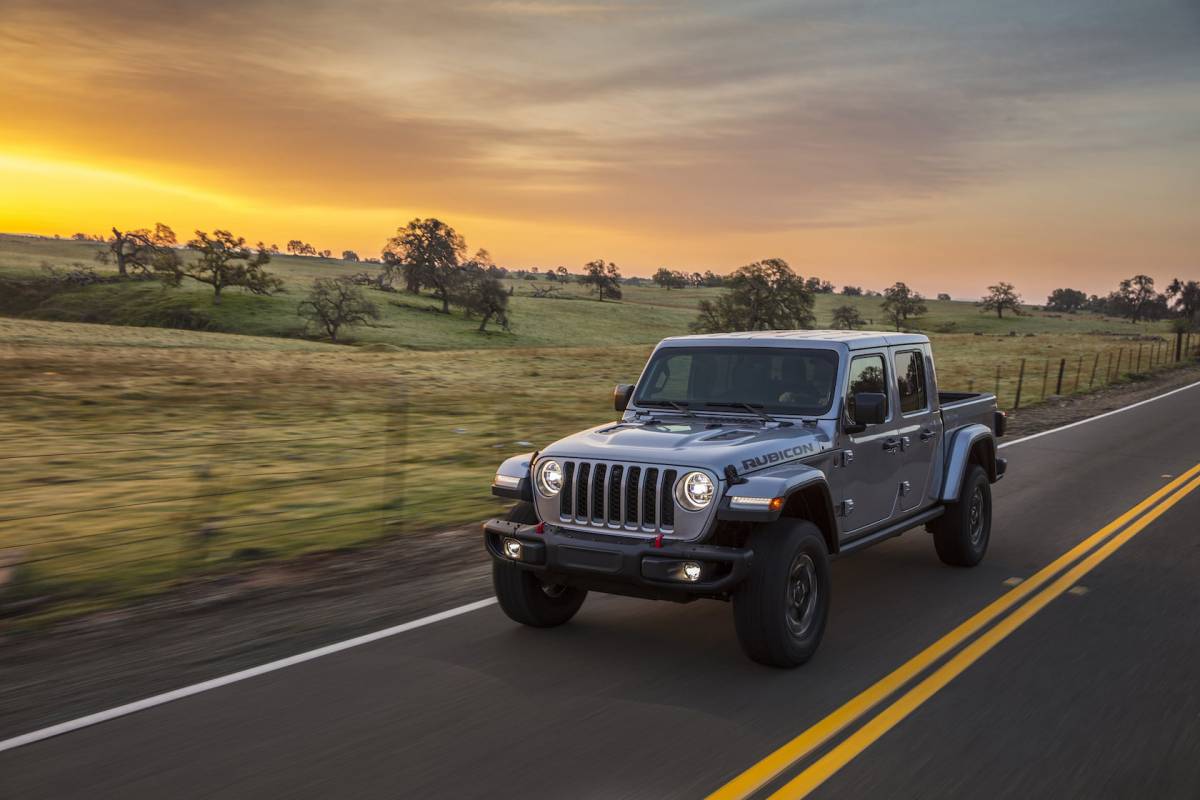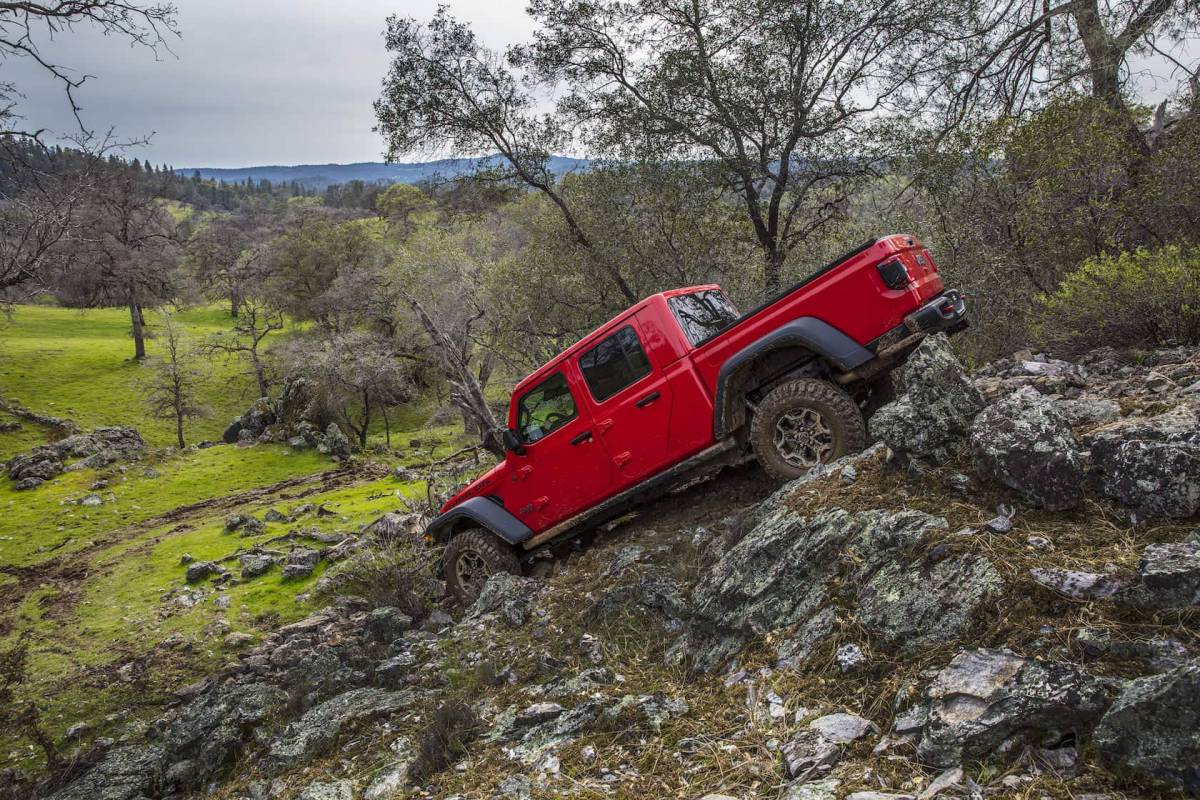The Gladiator name was first seen in 1962. It was basically a body-on-frame pickup with the face of a Jeep Wagoneer. Eventually, Jeep dropped the Gladiator moniker in 1971 in favor of the J-Series pickup trucks. Jeep eventually went to work on the new Gladiator which was introduced at the 2018 Los Angeles International Motor Show.
The 2020 Jeep Gladiator may be a long time coming, but it’s worth the wait. It combines the rough and ready attitude of the Wrangler JL with the utilitarian nature of a true pickup truck. It combines the best of both worlds, and it’s already slated to be a hit.
Here are the 5 things you need to know about the new 2020 Jeep Gladiator.
The Jeep Gladiator is riding on a new platform
Jeep could have taken the easy route by simply placing a larger box over a Wrangler JK platform, but they didn’t. Instead, Jeep gave the new Gladiator a new and dedicated platform. The new Gladiator’s body-on-frame chassis is 41-inches longer than the Wrangler 4-door. The result is a midsized pickup truck that competes head-on with the Chevrolet Colorado, Toyota Tacoma, and new Ford Ranger.
The Gladiator is only available in a single configuration
Unlike other American pickup trucks, the 2020 Jeep Gladiator is only available in a single body configuration. It’s a crew cab with a 5-foot steel bed and four-wheel drivetrain, and that’s it. There’s no long-bed or extended cab version to think about, nor can you choose a basic rear-wheel drivetrain. Whether this is a good or bad thing is entirely up to you.
It can tow and carry a ton of stuff
The new Jeep Gladiator is equipped to handle the rough stuff. Even the base model Gladiator Sport can tow 7,650 pounds and has a payload rating of 1,600 pounds. The Gladiator Rubicon is rated to tow 7,000 pounds and carry 1,160 pounds worth of cargo. That’s not too shabby compared to the Toyota Tacoma TRD Pro and Chevy Colorado ZR2.
And even though every Gladiator comes with an all-wheel drivetrain, the Sport, Sport S, and Overland trim are equipped with a Command-Trac transfer case with an open front and rear differentials. On the other hand, the Gladiator Rubicon comes with a Rock-Trac transfer case with electronic locking front and rear differentials.
No matter the trim level, you can select between 2WD High, 4WD High, 4WD Low, and Neutral using a dedicated shift lever. The Rubicon comes with a control panel to lock/unlock the front and rear differentials.

All Jeep Gladiators are convertibles
Yes, that’s not a typo. Jeep is offering a choice of three roofs for the Gladiator. There’s a soft top that simply peels back like a tonneau cover; a three-piece hardtop finished in black, and the same three-piece hardtop finished in body color. The new Jeep Gladiator even comes with a standard toolbox that comes with everything you need to remove the roof, the doors, and the windshield. God bless America!
There’s a diesel engine option for the 2020 Jeep Gladiator
The Jeep Gladiator initially came with a single engine option: it’s a 3.6-liter Pentastar V6 with 285-horsepower and 260 pound-feet of torque. And if you like rowing your own gears, the Gladiator comes standard with a six-speed manual. However, the optional eight-speed automatic is basically a steal at $2,000. You get smoother shifts, slightly better fuel economy, and a relaxed calf muscle with the automatic.
If you prefer an oil-burner in your Jeep Gladiator, there’s a diesel option coming in 2020. Rumor has it the diesel churns out 260-horsepower and 442 pound-feet of torque, which is great if you like towing heavier cargo.
The 2020 Jeep Gladiator has a base price of $33,545 (plus $1,495 destination fee), which is $2,000 more than a four-door Jeep Wrangler. The base Sport trim gets a healthy dose of kit including push-button start, an eight-speaker audio system, and air conditioning.



